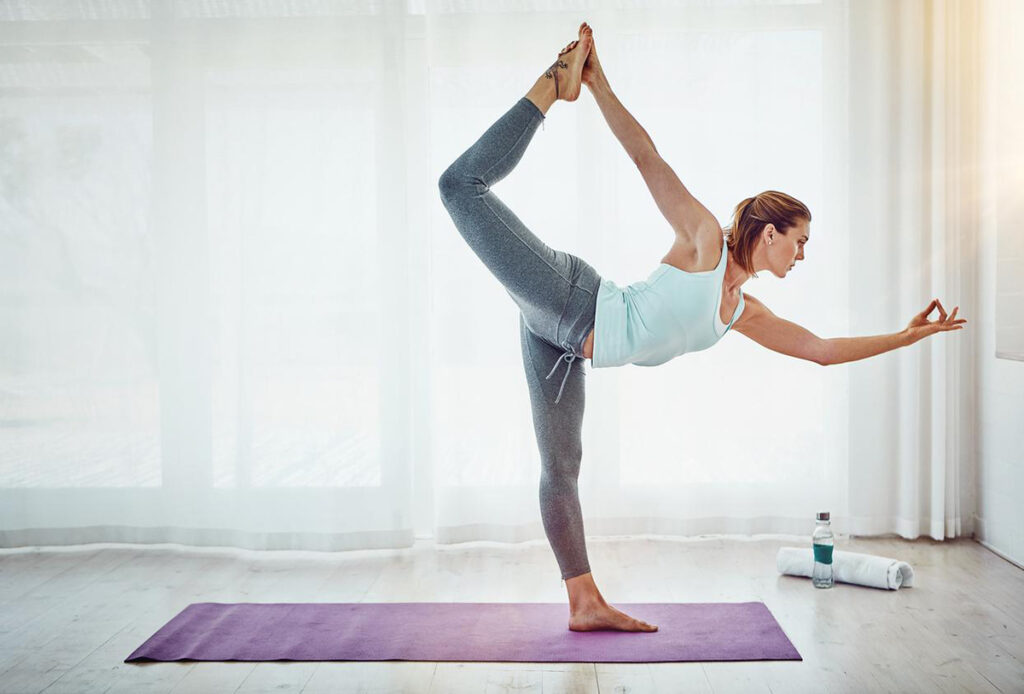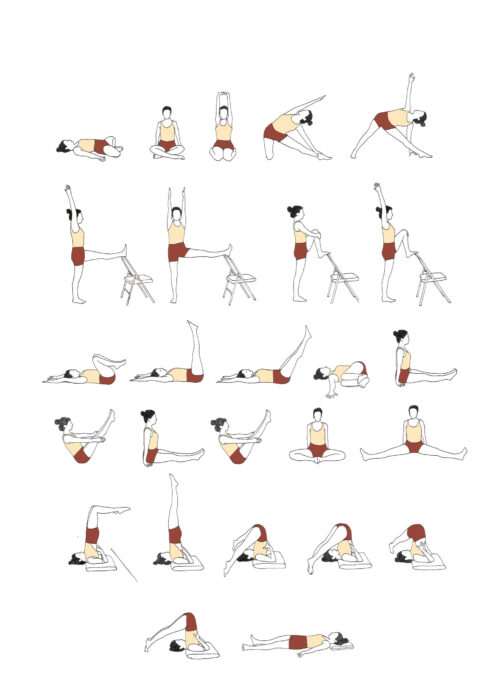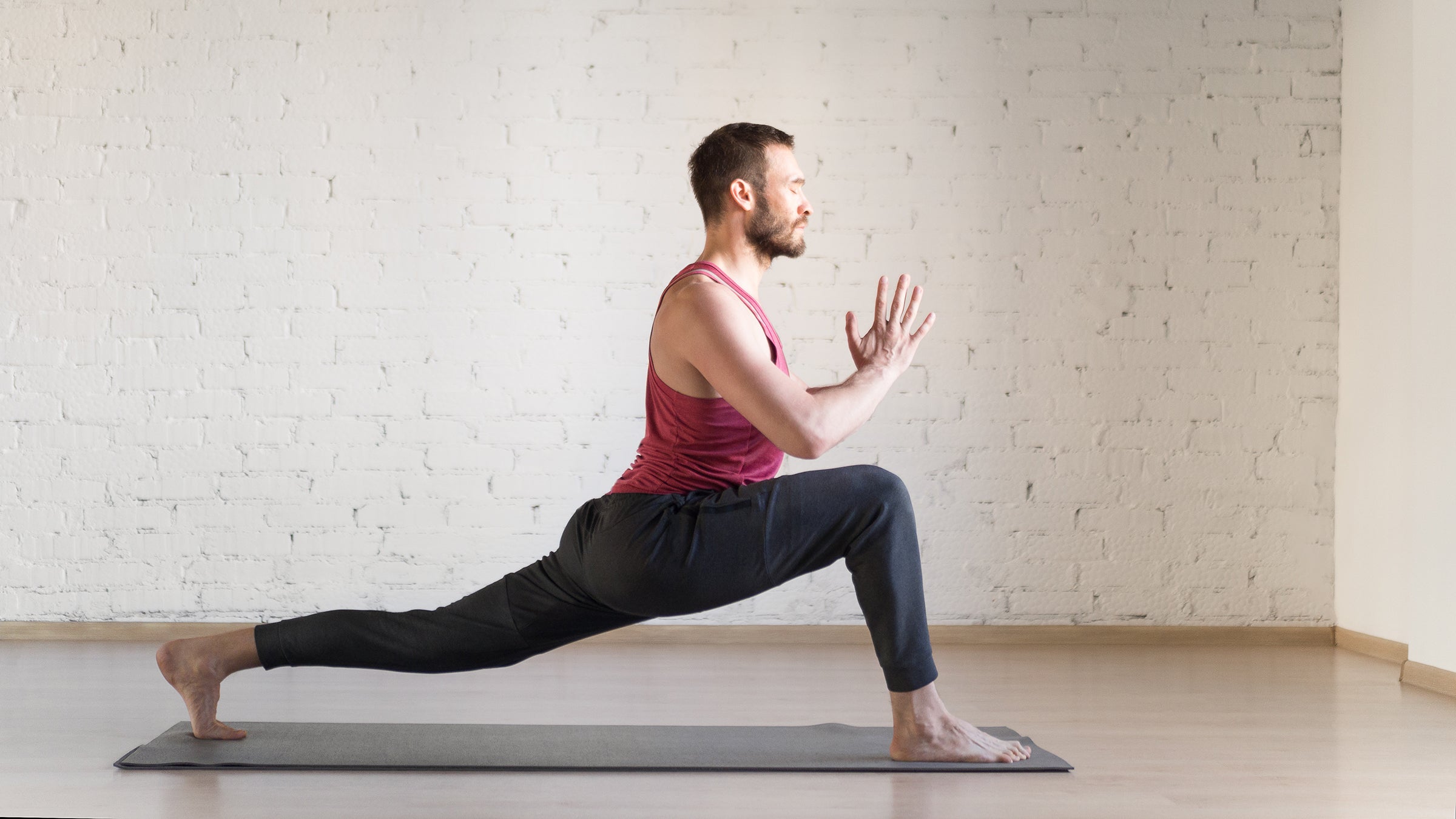
Yoga practice has many benefits. They can improve your physical and mental health as well as help you to reflect on your life. Here are some examples. Yoga is a wonderful way to start your day. The physical benefits of Yoga are self-evident. It helps you to feel more relaxed and clear your mind of clutter. It also helps you to meditate and gain self-awareness. Here are some of its most significant benefits.
Asanas
Asanas are a group of poses that can be performed one or two times and are then breathed normally. They keep your body strong and flexible. The practitioner can let their breath become a source for stress or relaxation. Yoga asanas can be used to help the practitioner reach Samadhi. Samadhi means the highest level of Ashtanga Yoga. Certain asanas may also help to raise kundalini (the spiritual energy that lies dormant in your root chakra). This is a great way to cleanse the chakras and purify your nadis.

Meditation
Meditation will allow you to stop thinking and instead focus on your breath. It creates a state that is still and fully aware. It's the best ground for rewiring you brain to feel inner peace. Meditation allows you to have pure thoughts. It's a way of letting go of your ego and the world around.
Self-reflection
Yoga has many forms that promote self-reflection. Meditation, controlled breathing, and nature walks are some ways to help self-reflect. Self-reflection can take many forms, but it is a way of looking inwards to gain insight. Although understanding is not the ultimate goal, it can help you to grow. Brie Skolaro, codirector of Aspire Psychotherapy New York City says that self-reflection is a tool that allows people to examine their lives and reflect on the things they do.
Physical health
Several studies show that practicing yoga can help combat many chronic health problems. Regular yoga practice can help lower blood pressure, improve blood flow, and reduce heart rate. Yoga reduces the risk of heart attack and stroke. It can also improve posture and balance. There are many other benefits. Listed below are some of the more common ones. Yoga may surprise you with its many benefits. Learn more. Be sure to consult your doctor before starting any kind of yoga exercise program.
Spiritual health
Yoga as a spiritual practice is about the relationship between mental and physical health. Mental disorders can often manifest as physical symptoms. People who are suffering from mental health problems often suffer from aches and pains. These people may benefit from yoga. Sangram Lad, who is a life coach, advocates yoga for spiritual well-being. Yoga has been used for thousands of years to help people overcome mental disorders.

Stress reduction
Research has focused on the potential benefits of Yoga as a stress-relieving and meditation practice. Many have studied the physiological effects of yoga asanas such as lowered blood pressure and faster heart beat. Another group has looked into mindfulness-based, or mindfulness-based, stress reduction. It uses breathing techniques and meditation to reduce stress and calm the mind. However, the studies don't compare Yoga for stress relief to a control group. There are many methods that can be used to determine the effectiveness of Yoga as a stress-relieving exercise.
FAQ
How long should a class of yoga be?
A typical yoga session takes between 45 minutes and one hour. The type of Yoga you are practicing will impact the length of your yoga session. 45-60 minutes is probably sufficient if you are looking to do strength-building exercises. For relaxation and meditation, however, an hour may be needed.
It also depends on the yoga class that you're taking. Some classes require quick movement while others encourage slow, deep stretches.
Who would be most benefit from yoga?
People who seek to improve their quality and health through yoga are their target market. People who want to improve their flexibility, balance, and posture.
They might also be looking to gain or lose weight. They may also be interested to reduce stress and anxiety, and achieve peace of mind.
Some disabilities are: arthritis, back issues, diabetes heart disease, high bloodpressure, insomnia, migraines and obesity. Yoga is especially beneficial for these individuals.
What do I need in order to practice yoga?
A mat, some that can be folded, loose clothes and a blanket or towel to cover your head when you lie down will be necessary.
Additionally, props may be needed for certain poses such as blocks or straps, bolsters/bolsters blankets or towels.
You shouldn't have anything else. You must have a desire for positive change in your life and be willing to dedicate yourself to yoga.
What are the top types of yoga mats for you?
There are many types of yoga mats. Choose one based on its size, price, and durability.
A high-quality mat will be thick enough for protection, but thin enough to be easily moved.
You may find that a cheap mat does not provide enough support.
What happens if I stop doing yoga?
It is normal to lose enthusiasm after a while. You may notice stiffer muscles if your yoga practice is discontinued. Poor posture, lack of exercise and aging can all contribute to stiffness.
You might consider taking a few more classes if your flexibility becomes less apparent over time. Make sure to keep up with your daily routine. Exercise can strengthen your bones, muscles and joints. Get enough sleep and eat well.
How much yoga do you think is excessive?
It's important to remember that yoga is not a sport. There is no minimum number of repetitions you must do before becoming tired. Instead, take the time to enjoy each step and be patient.
It's okay to fall off the wagon every now and again. Don't worry if you lose your way once in a while.
Start with 10 to 15 minute sessions if you are new to yoga. Then, work your way up.
Statistics
- According to calorie estimates calculated at Harvard Medical School, the average 125-pound person burns about 120 calories in a half hour of hatha yoga, and a 185-pound person burns about 178 calories in that half hour. (everydayhealth.com)
- The people in the yoga group were 37 percent more likely to have quit smoking by the end of the 8-week program. (nccih.nih.gov)
- A 2020 review of 27 studies (1,805 total participants) of yoga interventions in children or adolescents found reductions in anxiety or depression in 70 percent of the studies, with more promising results for anxiety. (nccih.nih.gov)
- Start your Fall off right with 20% off All Access Membership when you sign up by 9/25! (corepoweryoga.com)
- About one in seven U.S. adults practiced yoga in the past 12 months, according to a 2017 national survey. (nccih.nih.gov)
External Links
How To
Where is the best spot to practice yoga?
There is no one right way to do yoga. Each person has their own style. The most important thing is to feel at ease in the positions you choose.
Here are some common postures:
Standing poses - Standing poses are suitable for beginners because they allow you to see how your body looks from different angles. They allow you to focus more on your breathing.
Forward bends - Forward bends are often used to open up tight areas of the body. These can be done while you are sitting or lying down.
Backbends: Backbends can be considered advanced poses. Your instructor will be able to help you if you are interested in trying one.
Inversions-Inversions are a pose that requires you to balance your body upside down. This type is challenging, but rewarding.